Burrowing dogs: description of breeds, features of maintenance and upbringing
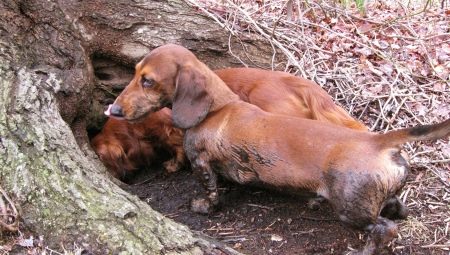
Historically, one of the first uses of dogs in human life was hunting. And to this day, it remains an important specialization of these animals. Particularly noteworthy are those pets that are able to catch the animals hiding in the ground.
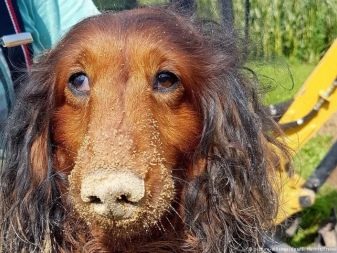

Peculiarities
Burrowing dogs stand out even in relation to other hunting breeds. The very definition shows what their specialization is. It consists in finding wild animals and in capturing them directly to the shelter.
Usually a dog going into a burrow is in good health. But even they can be characterized by certain diseases, their list is determined by a specific breed.
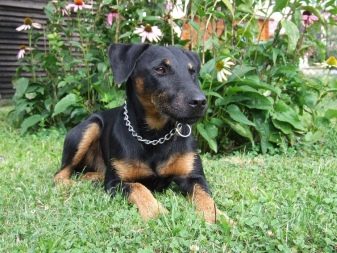
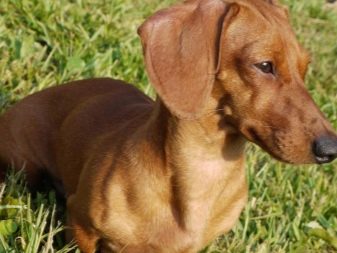
Burrowing dogs most commonly suffer from:
- spinal deformities;
- malfunctions of the heart and blood vessels;
- visual and auditory disorders.
The main prey of burrowing dogs are:
- raccoon dogs;
- foxes;
- otters;
- badgers.
The dog's strategy of action is not always the same. Usually, after entering the hole, she needs to bark at the victim and grab it. In other cases, potential prey is driven out, where it is already trapped or at gunpoint.
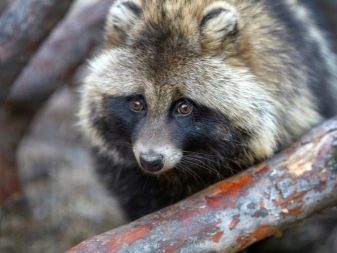
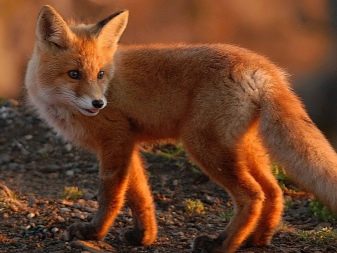
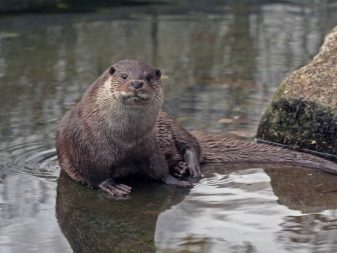
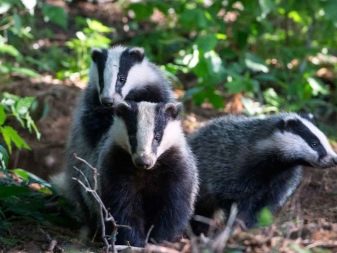
But there is another approach - forcing the animal to hide in a snorkel. Further, the hunters can only dig, and the pet's barking acts as a guide.
Burrowing dogs after special training can be used in both land and water hunting. Some breeds are even suitable for:
- work on wild boars and elks;
- feeding shot birds;
- search for beavers;
- checking beaver lodges.
But nevertheless, their main scope of application has a decisive influence on the nature of burrowers. These animals should be extremely brave and show viciousness towards wild animals.An important feature is a certain level of independence (after all, one cannot count on the help of the owners and even their prompts in the hole). However, this independence should not translate into a loss of control.
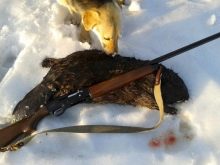
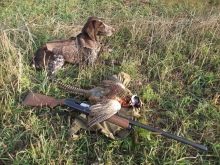

And even the most courageous, staunch dog will lose a mortal battle with prey if he rely only on his own character and will to win. A prerequisite for them is a strong physique and solid physical development.... The dog must also be hardy. The animal should be unpretentious and firmly endure any weather conditions (including not only freezing temperatures, but also wind, rain, fog, high air humidity). Hunting often occurs in the fall and winter, so weather resistance is critical. It, in turn, depends on the condition of the hairline.
But even if the pet is quite reliable, there is more to come. He needs to have excellent eyesight, smell and hearing in order to quickly find prey. A dog for burrowing hunting must instantly adapt to urban and rural life, to long hikes - more than once it will have to rebuild between modes in a matter of hours.

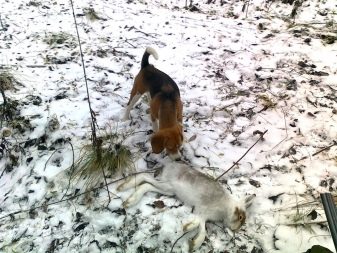
Another must-have feature is suitability for long journeys on cars and trains, motorcycles and motor boats. But you will have to carefully select your pet, because even among the formally suitable breeds there are too many "sofa" individuals.
Popular breeds
Although the "assortment" of burrowers is expanding, the main varieties of these dogs have remained unchanged for several decades. The very first described dog will be dachshund. Although it has been bred for about 400 years ago, the popularity of this animal has not diminished. Its characteristics were only further honed by long-term use. The hunting instincts of the breed are even hypertrophied.
Standardized dachshunds are heavier than 7 kg, sometimes reaching 15 kg. The height of such animals can reach 0.23 m. They are characterized by a powerful, dense exterior. The anterior part of the body clearly outweighs - the chest is much wider than the pelvis. The shortened feet are still strong enough and have a crooked fit.
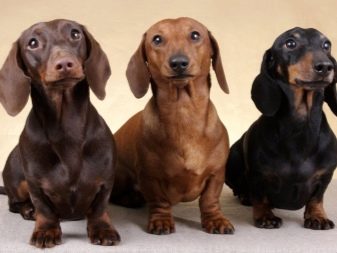

This last property is not accidental: with any other structure of the paws, jumping out of holes would be very difficult.
The muzzle, like the entire body of the dachshund, is elongated. The ears are usually drooping and the tips are rounded. There are also long-haired dachshunds that differ from the standard ones only in the length of their hair. As for rabbit dachshunds, they almost completely correspond to larger individuals, however, they are significantly smaller and lighter - a maximum of 5 kg.
Any of the branches of this breed works well for home keeping. All of them are unpretentious. At the same time, they are able to instantly switch from "sofa" to "field" mode. Dachshunds understand commands instantly and are easy to learn.
They will carry out only those orders that seem appropriate to them at the moment. No punishment helps here: animals are proud, independent and even obstinate. Dachshunds are considered great partners. But in their descriptions it is invariably noted that loneliness by such pets is poorly tolerated, rivalry with other pets is also not well perceived.
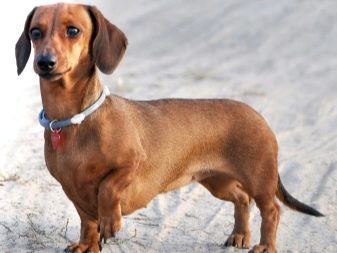
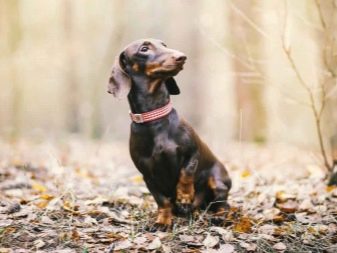
It is very difficult to train such a dog, it will take a lot of patience. Owners must treat their animals with respect.
At the same time, untimely training and its late start can lead to the appearance of self-will and attempts to subdue the owner.
In second place after taxes are deservedly game terriers. Their descriptions invariably point to a combination of dexterity and courage. Such dogs will perfectly cope not only with small prey underground, but also with birds and even individual artiodactyls. Jagd terriers have been used since the beginning of the twentieth century, and this time was enough for them to reliably win the hearts of hunters.
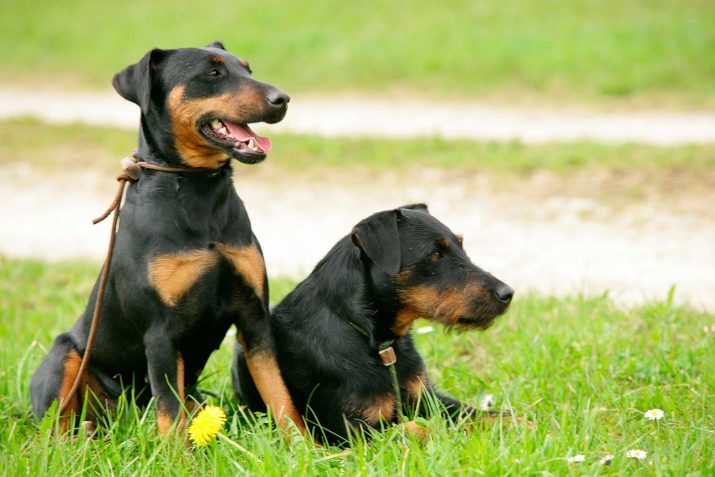
The advantage of this breed is the exterior, which is maximally oriented towards burrowing hunting:
- dry, medium-sized body;
- weight on average 10 kg;
- strongly developed muscles;
- powerful limbs;
- elongated muzzle;
- wool divided into two layers;
- powerful undercoat.
As for character, the jagdterrier is characterized by an amazing combination of courage and aggressive behavior. The breed is very focused and knows how to behave purposefully. Fear of such a pet is practically unknown. Therefore, jagdterriers penetrate the holes of animals without hesitation, motivated only by the desire to realize their own potential.


But for the same reasons, the training of such terriers is very difficult. Stubbornness and severity make them try to invariably win dominant positions in the home "pack".
A good alternative to jagdterriers are Cairn Terriers. They are characterized by a combination of powerful hunting instincts and good looks. An adult dog is 0.28 m tall and weighs about 6-7 kg. A feature of the cores is the wool, which seems to be disheveled in appearance.
It is appropriate to complete the review of breeds at fox terriers... As you might guess from their name, this species was bred purposefully for hunting foxes. The animals are very compact: their growth is no more than 0.38 m, while the maximum weight reaches 8 kg. Fox Terriers are divided into long-haired and smooth-haired varieties, both of which are characterized by endurance and impressive courage.
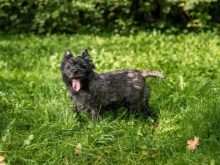
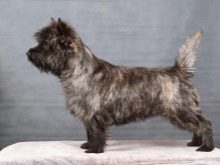
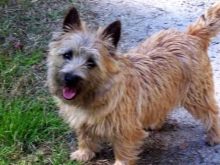
How to choose a puppy?
To begin with, you need to understand which properties of the rocks are advantages, and which are obvious disadvantages. A very bad feature is the desire to enter holes without the permission of the owners. The size of the pet should not be too small - because of it, many problems can arise. Moving slowly through thick, tall grass is often an advantage.
Thanks to him, hunters manage to get to the place where the pet drives the animal out of the hole, and successfully shoot or use a trap.
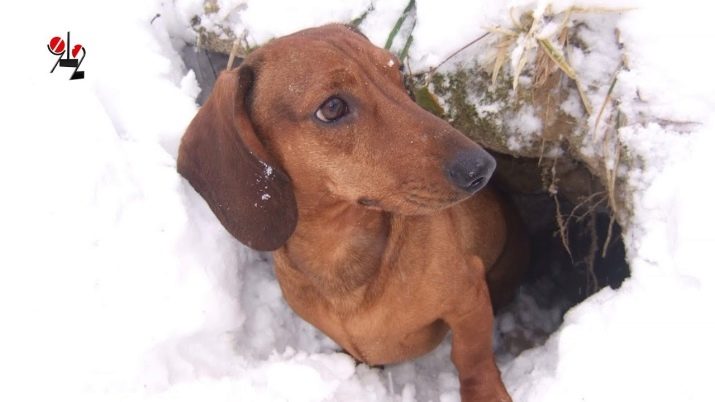
These moments are typical for any breed. The choice between the individual varieties should be based on:
- different manner of action of animals;
- unequal temperament;
- behavioral features;
- the external appearance of the animal.
If the necessity of the first three points is logically clear even to non-professionals in hunting, then the last one needs clarification. The appearance of a pet that does not suit the aesthetic tastes of the owner will only cause irritation. No matter how a person tries to keep such negative emotions in himself, they will invariably be expressed in a relationship with a four-legged helper. Therefore, the effectiveness of educational work will be much lower than we would like. And it will not be possible to achieve the necessary trust.
But it's not just the nuances of character and psychology. Welsh terriers and coarse fox terriers are wonderful dogs in themselves.
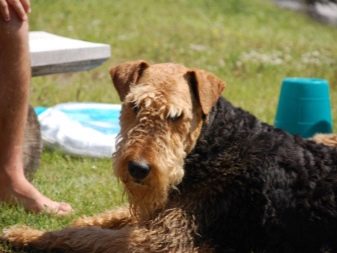
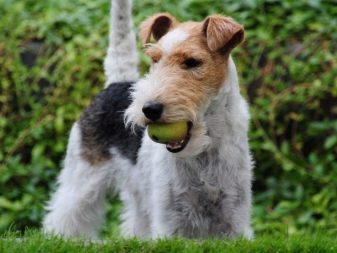
However, they need to be trimmed at least once every six months. With the rapid growth of wool, it will be required once in 4 months. A dachshund with long hair will have to be brushed daily.
Another subtlety is that very long and very short coats are equally bad for hunting. In the first case, the animal will constantly get dirty, in the second, the risk of hypothermia is great. In order to avoid mistakes, it is imperative to consult with professionals from canine centers.
The rarity of some animals affects more than just their price. Sometimes it is impossible to find a certain breed in some area for any money. As for animals for keeping in outdoor enclosures, then the choice is unambiguous - only a terrier will do. The dachshund cannot be grown in an open-air cage, even in the southernmost regions of the country.
Recommendations regarding the sex of the animal are contradictory, and most breeders, as well as hunters, have their own opinion on this matter."Men" are determined and not too inclined to seek compromises. They are characterized by the desire to take leadership positions in any "pack". Another important trait of such pets is increased viciousness (which is very good for an animal that preys on burrowing creatures).
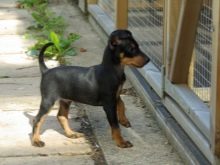
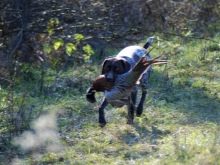
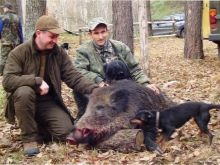
Stronger physique and increased endurance are also usually observed. Because of this combination of qualities, complaints often arise about the pugnacious disposition of dogs and quarrelsomeness.
Quite a few owners note that on the street male burrowers seem completely uncontrollable and lose all desire to obey. Running away somewhere for the slightest reason (and sometimes without any reason visible to people) is a common thing for them. But still, such dogs in skillful hands are a real treasure. On the hunt, they show all their best qualities:
- physical endurance;
- the ability to experience severe emotional stress;
- ability to work throughout the season (if there are no injuries).
As for the females, they are distinguished by greater softness and plasticity of behavior. It is much easier to get the desired action from them. Such animals immediately recognize a leader in a person, and very gross mistakes must be made in order for such obedience to be lost.
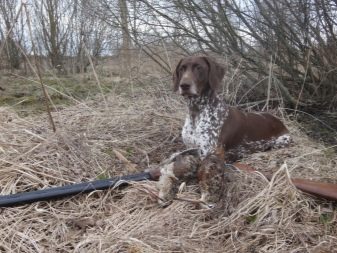
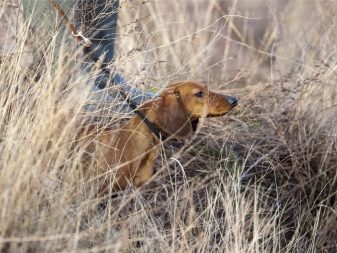
However, it must be remembered that within 2 out of 12 months they are unsuitable for hunting. Therefore, you need to carefully think about all these points and put a clear priority.
You should also consider:
- the origin of the puppy (his pedigree);
- the reputation of the nursery or breeder;
- the results that the animal shows when working in artificial burrows;
- the presence of physical defects;
- compliance with the external requirements of the standard.

Content rules
If the pet is resistant enough to the cold, then it can be placed in the aviary. This room should not be located near drain pits, garbage dumps, toilets. It is best to place the kennel on a sunny side, under a canopy, where the dogs can take shelter from the sunlight. In the city, of course, a four-legged must walk strictly in a collar. But on the hunt itself, this is unacceptable - there have been many cases when tragic events have occurred because of him.
In most cases, burrowing pets are kept at home or in an apartment. There, they should immediately be assigned a permanent place where the animal can rest. As a place for leisure, they usually use small wooden frames covered with fabric, or low trestle beds with legs.
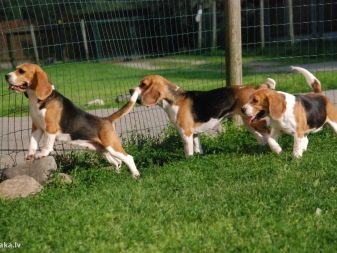
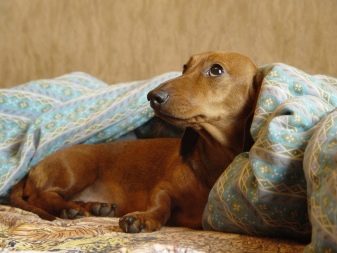
A hunting burrow is obliged to eat fully, both meat and vegetables should always be introduced into the diet. The maximum amount of salt for them is 20 g per day.
When choosing collars, you need to focus on:
- subjective comfort;
- lack of broken threads and protruding parts;
- the presence of expansion under the throat (it relieves pressure during sudden throws);
- ease of cleaning from dirt;
- adaptation to different temperatures;
- the ability to accurately fit the neck of the animal.
Other accessories include whistles and dog seat covers. An important condition in the selection is invariably the ease and convenience of the purchased items. The circle of toys is determined by how the animal's leisure is organized and how actively it will be.
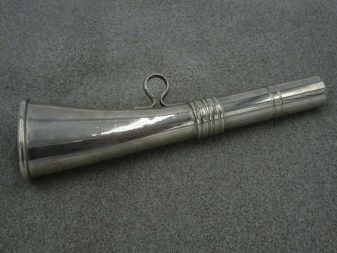
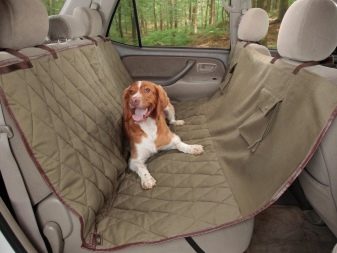
Be sure to think about the safety of accessories in every possible situation. Leashes should be of moderate length - this is the most practical.
Education and training
Serious questions from hunters are often related to the age when it is required to start training the dog. There is no universal answer to this question. Even experienced specialists always point out that the puppy should get used to the changed situation, and only then should the lessons begin. Do not immediately take your dog to the training grounds. First, a full home preparation should be made, morally and physically.
At first, the puppies in the new home show a nervous disposition. And this is almost normal.In this case to calm down the pet, take away the usual rugs or parts of them from sellers... The familiar smell will allow the animal to stabilize its psyche faster.
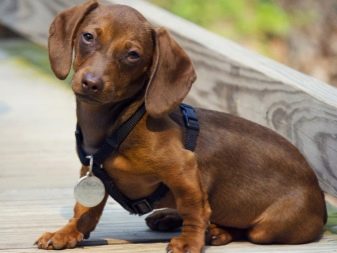

As soon as the burrow begins to whine for the first time, you need to immediately pay attention to him (by playing or simply by gentle treatment). Games with burrowing dogs should contain as many active elements as possible. The animals themselves must be made to feel like winners. But you still have to make sure that they do not overwork. Developing stamina in outdoor activities will help a lot later on hunting.
It is required to accustom the pet to actions in the dark (using the same game elements). Imitation of a burrow at home is simple - a trench is dug, which is covered with boards. Experts advise to bring such a structure as close as possible to the usual natural landscape in the area where it is planned to hunt.

You will also have to train the dog to act in the water. To do this, they walk with her after the rains - puddles are ideal for overcoming hydrophobia.
One of the best training techniques is:
- the pet is tied;
- digging a hole;
- they put their favorite toy there and fall asleep;
- release the dog;
- encourage her, thereby stimulating her to dig up a valuable item as soon as possible.
Trainings at the docking stations should begin no earlier than 8 months. The first dressing is done in an artificial burrow where the fox is. You can take as a partner a more experienced burrower, but always of the same breed and of the same sex, preferably of a similar age. Trainings should be carried out systematically, and only then it is possible to achieve a good result.
How the burrowing hunt goes, see below.






































